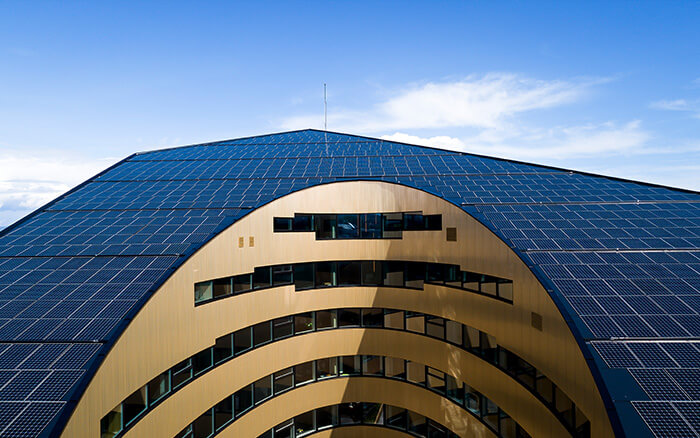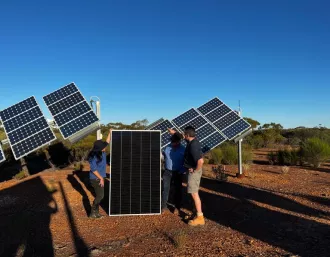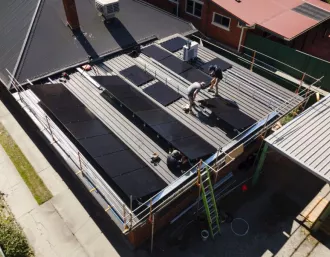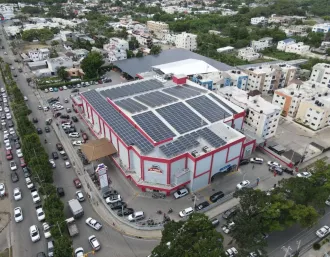Power to Spare

Along the waterfront of Trondheim, Norway, a sleek office building generates twice as much solar energy as it will ever use. It's not a design flaw. It's a very intentional architectural solution that's revolutionizing the way buildings are designed, powered, and ultimately, deconstructed.
Powerhouse Brattørkaia is an 18,580-square-metre office building that functions like any other – with the notable exception that it produces more than enough power for its own use. Excess power is shared with neighboring buildings, electric buses, cars, and the nearby harbor ferry system through a local microgrid.
This Powerhouse is the most recent building completed by a collaborative that calls itself the Powerhouse Team, representing the good that can happen when innovators come together to solve climate problems. Entra, an environmental leader in the real estate industry, owns and manages the property, while the international architecture firm Snohetta designed the building. Global green builder Skanska performed general contracting services.
The Powerhouse Brattørkaia takes green-building practices a quantum step further than other green buildings. As the term "energy-positive" suggests, the building will produce enough energy to even offset the production of building materials used in the construction, operation and disposal of the building.
The rooftop solar system designed and installed by local SunPower partner Solcellespesialisten offsets hidden energy costs embedded in the building's construction and eventual demolition over a lifetime of 60 years.
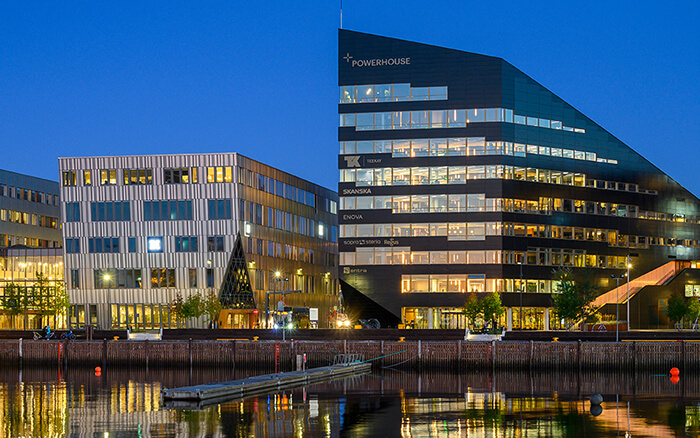
Energy from Powerhouse Brattorkaia illuminates surrounding buildings on the banks of the Trondheim fjord.
Brattørkaia is the fifth Powerhouse in a series of energy-positive buildings designed by Snøhetta, known for projects such as New York's National September 11 Memorial Museum Pavilion, the Oslo Opera House and an addition to the San Francisco Modern Museum of Art. The façade of this Powerhouse bears a surprising resemblance to other office facilities facing the river, but if you walk around the building, you'll see it's quite different on the other side. Instead of a flat, wide roof, the building's roof slopes steeply to take full advantage of the sun's position in the Northern Hemisphere.
A total of 1,157 SunPower Maxeon solar panels cover the roof, producing on average 358,000 kWh of energy annually. Special wall-based panels, not made by SunPower, contribute an additional 100,000 kWh. An oval-shaped oculus cut into the side of the solar wall permits sunlight to warm the atrium below.
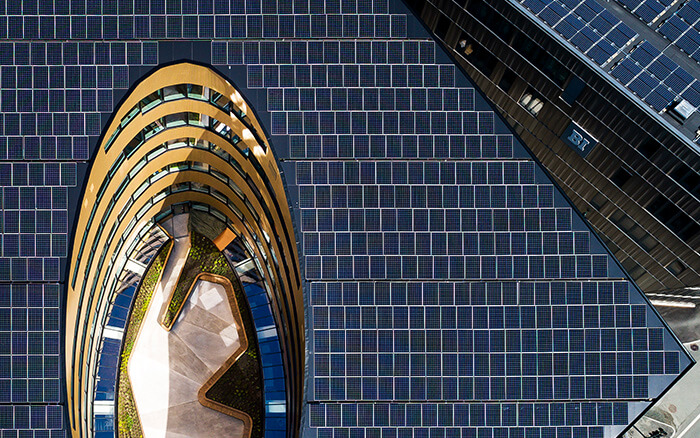
With 1,157 Maxeon panels on its roof and more on its façade, Powerhouse generates twice the energy it consumes.
Importance of High-Efficiency Panels in Limited Space
By designing an angled rooftop instead of a flat one, Snohetta's team was able to increase the amount of solar surface. Still, since the building must produce, on average, more than twice as much electricity as it consumes daily in order to fulfill its role as a local solar plant, power per square meter was paramount. It was no accident that the Powerhouse team chose SunPower Maxeon panels, which generate more power in a given space2 Based on datasheet review of websites of top 20 manufacturers per IHS, as of May, 2019. and degrade more slowly3 Jordan, et al, "Robust PV Degradation Methodology Application" PVSC 2018 and "Compendium of Photovoltaic Degradation Rates" PiP 2016. than any commercially available panel. As a result, SunPower Maxeon panels generate up to 35% more energy over 25 years compared with conventional panels in the same space.4 SunPower 400 W, 22.6% efficient, compared to a Conventional Panel on same-sized arrays (310 W mono PERC, 19% efficient, approx. 1.64 m²)
Because of the shape and position of the building, high winds are also a factor. "This project had the highest wind load that we have ever worked with -- 5 kilo newton per square meter or 5000 Pa," recalls Helene Bøe Tømmerbakke, Project leader for Solcellespesialisten. "We didn't think there were any solar modules that could withstand this wind load but then we found out that SunPower were proven under these conditions."
The SunPower panels installed at the Powerhouse were certified to Cyclonic Load Resistance of over 6400 Pa,5 AS/NZS4040.2 and AS/NZS1170.2 per HSEC report E160520 and ACE report 19-0381.02. equivalent to 375 kilometres per hour,6 <a href="https://www.eurocodeapplied.com/" rel="nofollow" title="Structural Design Calculations According to Eurocodes Could be Found Here" target="_blank">https://www.eurocodeapplied.com/</a> which is above a Category Five on the cyclone intensity scale.7 <a href="https://en.wikipedia.org/wiki/Tropical_cyclone" rel="nofollow" title="Find More Information About the Tropical Cyclone Isabel in 2003 Here" target="_blank">https://en.wikipedia.org/wiki/Tropical_cyclone</a>
NOTE: Customers should note that solar systems in high wind areas must be carefully designed by local experts and correctly installed in compliance with local guidelines, regulations and carefully chosen equipment. However, industry experts recommend starting your system design with a high wind-load solar panel as a critical first step.8 <a href="https://rmi.org/solar-under-storm-designing-hurricane-resilient-pv-systems/" rel="nofollow" title="Hurricane Resilient PV Systems Under Storm" target="_blank">https://rmi.org/solar-under-storm-designing-hurricane-resilient-pv-systems/</a>
Even in the northernmost reaches of Europe where winter days are only four hours long, the Powerhouse generates valuable solar energy through SunPower's highly efficient solar cell technology. In the summer, when days stretch to 20 hours long, excess energy is exported to the power grid.
Powerhouse Brattørkaia is a striking example of what climate-friendly office spaces could look like in the not-too-distant future: inspiring, resilient, and 100 percent energy-positive.
Project Summary
Product: 1,157 Maxeon 3 Solar Panels
Project Type: Net Energy Positive Commercial Building Rooftop
System Size: 415kWp, 358,000 kWh Annually
| Challenge: | Solution: | |
| High energy needs |
|
|
| Strong winds | ||
| Sustainable certification |
|
|
